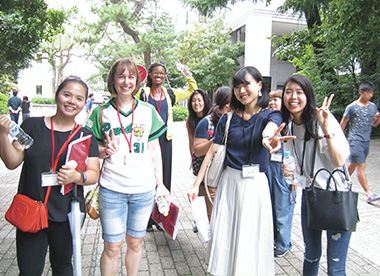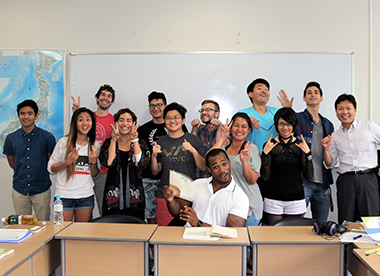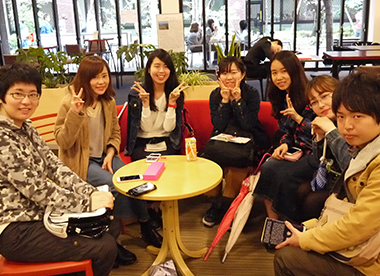Summer Intensive Japanese Program
Sample syllabus for Japan Study Lectures
Japanese Language Summer Intensive Course
The Institute for Language and Culture, Konan University
- Koji Nakamura
The Heart of Japanese Culture -Consistency and Changes - This class focuses on the heart of Japanese culture in terms of Japan’s modernization. Students should become aware of, analyze and discuss a number of the key issues involved in the kernel of Japanese culture and traditional values. These issues are then followed up in studies of Japanese history, education and business. Class discussion involves the use of on-line material, newspaper and power-point handouts in order to create a leaner-centered interactive and communicative class. We will discuss the heart of "Haiku" with Haiku moment, "Mono no Aware", human sensitivity to the wonder of nature and people and its transience, "Wabi", aesthetic taste for simplicity, tranquility and transcendental attitude toward life for peace of mind, and "Mujokan", the philosophy of mortality and transience of human attitude. Let us explore the heart of Japanese implicit culture and its possibility as another universal value in Japan.
- Stanley A. Kirk
Ethnic Minorities in Kobe and Related NPOs: A Historical Overview - Although known as a homogeneous society, in fact Japan is home to a number of ethnic minorities, and as a major port city, Kobe is no exception. This class will consist of a mini-lecture which gives a short historical overview of some of the main ethnic minority groups in Kobe, as well as several Japanese NPOs in Kobe that are involved with these groups and are seeking to promote a more multicultural and diverse society. Following the mini-lecture, two or three guest speakers will tell their own stories about living as a member of an ethnic minority in Japanese society and the progress they have noticed over the years.
- Keiko Yoshida
Working Conditions in Japan: Past, Present and Future - After the bursting of the bubble economy in the early 90’s, how have the working conditions in Japan changed? What are the newly amended laws to resolve current working issues in Japan? What are the labor power projections for Japan in the future? In this lecture, the annual report, white paper and Labour Standards Law publicized by the Japanese Ministry of Health, Labour and Welfare will be used to help understand the real meaning of working in Japan in the past, present and future.
- Thomas M. Mach
Sustainable Living in Japan: From Edo to Today - Japan’s rapid industrialization in the 20th century was an economic success story but an environmental tragedy. Nevertheless, these days, whether we look at rural villages or crowded cityscapes, remnants of this country’s traditional approach to living lightly are not hard to find.
In this class, as we explore the Japanese variant of earth-friendly living, we’ll touch on a wide variety of topics including home design, rice cultivation, food stalls, and human waste. We’ll start in the Edo era when Japan, closed off from the rest of the world, achieved full self-sufficiency while supporting a relatively large population on limited resources. We’ll also look at modern equivalents of Edo innovation and discuss prospects for the wider applicability of sustainable living as practiced in Japan. - Nobuo Tsuda
Chiune Sugihara—His Life and Legacy - During 1940s Chiune Sugihara served as the vice consul for the Japanese Empire in Lithuania. During that time Sugihara helped many Jews escaped from Europe by issuing transit visas to them.
In this lecture, students will learn about Sugihara’s life and legacy and why he risked his job and his family to help thousands of Jews flee from German-occupied Western Poland and Soviet-occupied Eastern Poland, as well as residents of Lithuania.
About Our Programs
-
Year-in-Japan Program

Spend a year immersed
in Japanese language and culture.
It is likely to be one of the most challenging
and exciting years of your life. -
Summer Intensive
Japanese Program
A 6-week intensive Japanese language program
running from June through July. -
Other Programs

Konan University offers other programs
for students from neighboring countries enrolling
in courses instructed in the Japanese language.
